No new data or images over the last few sols. This is a reminder to the science team that operating Curiosity, over 55 million km away from Earth, must cause challenges to the continuous operation of rover systems. Part of the memory on Curiosity’s computer malfunctioned. The memory has in built redundancy, another part of the memory […]
Mars Science Laboratory Blog
February 27th 2013 Sol 200

We now have material within Curiosity for the SAM mass spectrometer and the CheMin X-ray Diffraction. The image taken with the left lens of MastCam shows the inlets for SAM, on top of the main body of the rover. These were shut after the sieved, drilled material was dropped in from the sample handling system CHIMRA on the […]
February 10th Sol 182

The latest drilling has gone to 6 cm depth and we will use this for CheMin and SAM analyses. This is a first for Mars exploration: starting to explore the subsurface may show us different mineral and chemical assemblages from those on the oxidised surface. The image shows a left MastCam image of the John Klein outcrop, […]
February 7th 2013 Sol 180
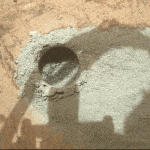
Our latest drilling activity is shown in this Mahli image. The circular drilled hole is 1.6 cm diameter and the sort of fresh rock powder that will be used for ChemCam, ChemMin and SAM analyses has been exposed. So it is looking promising for the deeper drillling as well. On the 8th February there will be a […]
February 4th 2013 Sol 178
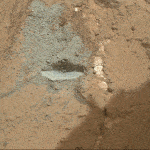
Here is another Mahli image, of the first drilling hole at John Klein. As we drill we learn more about the nature of the sedimentary material at Yellowknife Bay. We are interested in minerals like clays and sulphates which can help us piece together the history of water in Gale Crater. The exposed blueish colour […]
February 2nd 2013 Sol 176
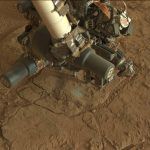
The rover planners are testing the drill by touching 4 points around the chosen drill site and testing the drill action, but not with the full force that the final drill action will use. We need to see what effect the drilling will have on the entire drill mechanism. You can also see a roughly circular, blueish […]
Friday 25th January 2013 Sol 168
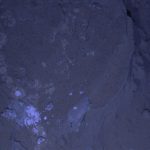
One of the features of the MAHLI microimager is that it has a set of LED lights around the lens aperture. The ultraviolet lights have now been tried out on one of the Yellowknife rocks Sayunei, which is a mixture of veining material and the surrounding sedimentary rock (see image). Illuminating a sample with utraviolet […]
Tuesday 22nd January 2013 Sol 166
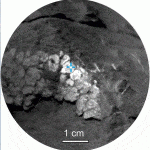
This close up view of one of the veins was taken as an RMI image by one of the two ChemCam lasers after the Laser Induced Breakdown Spectroscopy (LIBS). The intensity of optical emmisions (LIBS) of different elements suggest that these are sulphate veins. However, in addition to LIBS, the RMI imaging of ChemCam has proved to be a very powerful, high resolution tool, as this […]



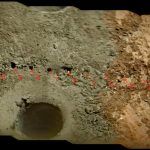
Recent Comments